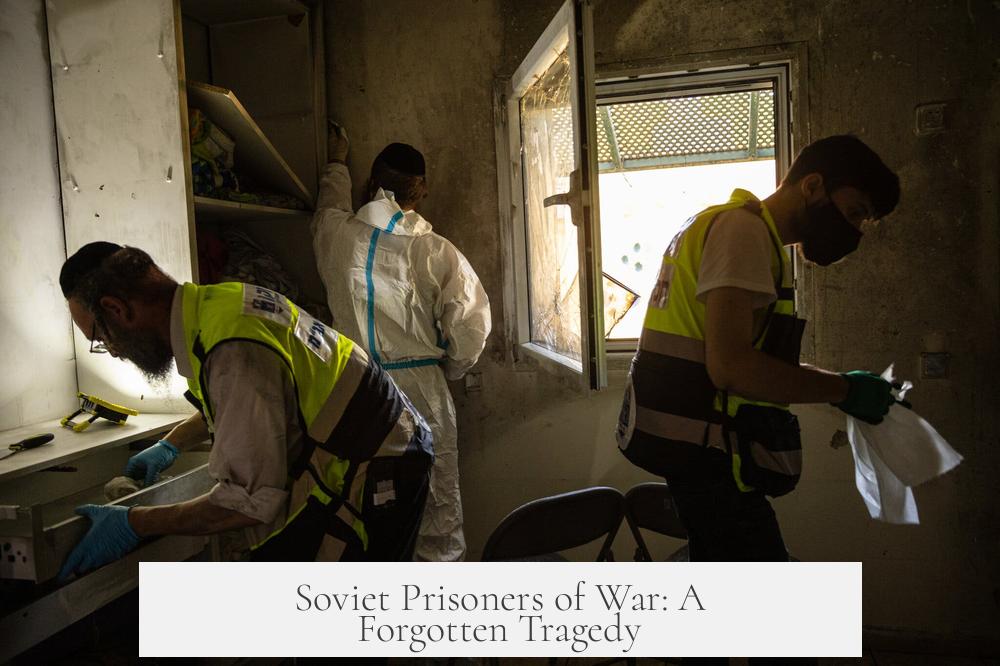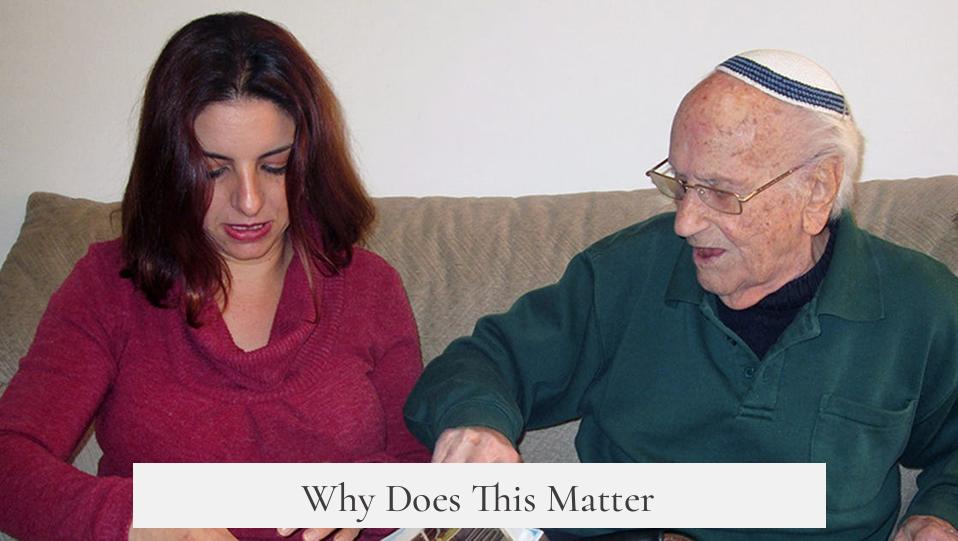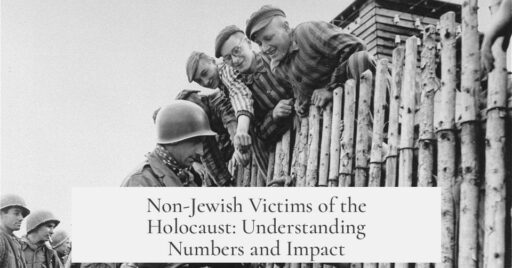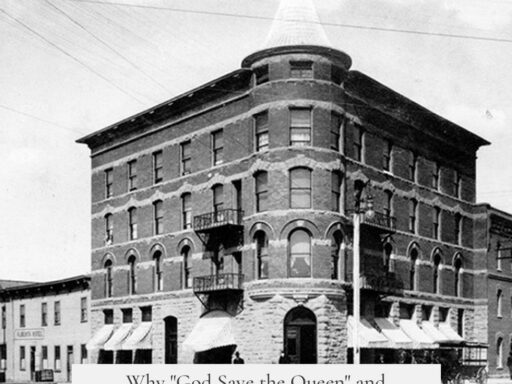The number of non-Jewish victims who were part of the Holocaust is estimated to range from approximately 6 million to more than 11 million individuals, depending on the groups included and the scope defined. These victims primarily encompass Soviet and Polish civilians, Soviet prisoners of war, Roma people, and individuals with disabilities targeted by Nazi policies.
The Holocaust is most commonly defined as the systematic genocide of 5 to 6 million European Jews by Nazi Germany. However, many historians use a broader definition that includes other groups persecuted and murdered by the Nazis. When these additional victims are accounted for, the total estimated number of deaths rises to between 11 and 17 million. This broader scope is crucial for understanding the full scale of Nazi atrocities beyond the Jewish population.
Determining exact numbers remains difficult. Many records were destroyed or never kept, and estimates vary by source and methodology. Even reputable institutions like the United States Holocaust Memorial Museum (USHMM) provide cautious lower-bound ranges. Despite challenges, reliable estimates give insight into the scale and demographics of non-Jewish victims.
- Soviet and Polish civilians: The largest non-Jewish victim groups. Soviet civilian deaths directly caused by Nazi Germany approximate 7 million. This number does not include at least 2 million forced laborers deported to Germany who died, or approximately 4 million who died from starvation and disease under German occupation. Polish civilian deaths are estimated around 2 million, with some Polish historians suggesting figures as high as 2.8 million.
- Soviet prisoners of war (POWs): About 3.3 million out of 5.7 million Soviet POWs captured by the Nazis perished in camps. This figure excludes Jewish Soviet POWs, many of whom were killed immediately or transferred to concentration camps.
- Roma victims: Estimates for Roma (Gypsy) victims vary but generally range from 250,000 to 500,000 deaths—about half of the prewar European Roma population of 1 million. Some scholars argue for figures as high as 1.5 million based on larger population estimates, but the lower range is more widely accepted.
- People with disabilities: Thousands were murdered under the Nazi “euthanasia” program (*Aktion T4*). These killings occurred primarily within Germany, where record-keeping was precise. Counts of disabled victims in occupied territories like Poland and the Soviet Union are more uncertain. The deaths of people with disabilities represent a key precursor to the mass extermination policies later pursued.
The variation between total estimates stems from which victim groups are included and the methods used for counting deaths. Other targeted groups, such as Communists and political prisoners, also suffered mass killings but are often counted separately from Holocaust victim totals. Furthermore, the complicity of Nazi allies introduced more victims, though documentation in those regions remains less comprehensive.
Overall, the broadly accepted range of Holocaust victims including non-Jewish groups is between 11 million and 17 million. Non-Jewish victims account for millions of deaths, illustrating the extent of Nazi persecution and genocide beyond the Jewish community. Continued research sometimes adjusts these figures but confirms ongoing uncertainties due to lost or inaccessible records.
| Victim Group | Estimated Number of Deaths |
|---|---|
| European Jews | 5-6 million |
| Soviet civilians | ~7 million+ (including forced laborers and starvation) |
| Polish civilians | Up to 2.8 million |
| Soviet POWs | ~3.3 million |
| Roma (Gypsies) | 250,000–500,000 (possibly higher) |
| People with disabilities | Thousands within Reich and occupied territories |
The Holocaust’s victim count reflects complex and horrific Nazi policies targeting multiple groups across Europe. Millions beyond the Jewish population suffered and died. Their experiences form an essential part of understanding the event’s devastating scope and impact.
- Non-Jewish victims include Soviet and Polish civilians, Soviet POWs, Roma, and disabled people.
- Exact numbers are uncertain due to destroyed or incomplete records.
- Combined victim estimates (Jewish and non-Jewish) range between 11 million and 17 million.
- Soviet civilian and POW deaths alone number around 10 million.
- Roma deaths are estimated at 250,000 to 500,000, possibly more.
- People with disabilities were among the first targeted groups with well-documented killings.
- The term “Holocaust” can refer narrowly to Jewish genocide or broadly to all Nazi genocidal policies.
How Many Non-Jewish Victims Were Part of the Holocaust?

The number of non-Jewish victims of the Holocaust is staggering, estimated to be several million, but exact figures remain elusive due to the scope of Nazi atrocities, differing definitions, and scarce documentation. The Holocaust is often synonymous with the genocide of six million Jews. Yet, when we widen the lens, other groups—like Roma, Soviet civilians, prisoners of war (POWs), and people with disabilities—also suffered grievously under the Nazi regime.
So, how many non-Jewish souls perished during this dark chapter? Let’s unpack the layers, navigate the statistics, and shine a light on a frequently underappreciated aspect of Holocaust history.
What Exactly Does “Holocaust” Mean?
First things first: defining “Holocaust” isn’t as straightforward as it seems. Historians debate whether the term should exclusively refer to the genocide of Jews or be used more broadly to include other groups systematically targeted by Nazi Germany.
This definitional tug-of-war affects victim counts. Some scholars reserve “Holocaust” for Jewish suffering alone. Others prefer a broader term, sometimes called “Holocaust and Nazi genocides,” including the Roma, disabled individuals, political prisoners, and more.
Think of it like how some people insist “soda” means only cola, while others call every fizzy drink soda. The choice colors how many “victims” we count.
Estimating the Total Non-Jewish Victim Numbers
When non-Jewish groups enter the picture, the death toll climbs from about 5-6 million Jewish victims to roughly 11-17 million total victims. This wide range depends on which groups are counted and how.
Here’s a quick rundown:
- Soviet civilians: Around 7 million directly killed by Nazi forces. Some Russian sources push the figure to approximately 7.4 million plus millions who suffered from forced labor, starvation, and disease during occupation.
- Polish civilians: Estimates go as high as 2.8 million, with consensus generally acknowledging a bit lower.
- Soviet POWs: An estimated 3.3 million—a chilling 58% of the 5.7 million Soviet soldiers captured.
- Roma: Between 250,000 and 500,000, though some activists argue for figures as high as 1.5 million.
- People with disabilities: Thousands killed systematically in the Nazi “euthanasia” program, plus unknown numbers in occupied territories.
Soviet and Polish Civilians: The Largest Non-Jewish Groups
Understanding Soviet and Polish civilian losses is pivotal. The Nazis’ brutal occupation policies led to the deaths of millions—many through direct killings, others via starvation, disease, or forced labor.
It’s estimated that 7 million Soviet civilians died under Nazi control, but that’s not the full story. Over 2 million “Ostarbeiter” (forced laborers from the East) died due to exploitation and harsh conditions. Add another 4 million or so who succumbed to starvation and disease during the occupation.
Polish civilians faced similar horrors. Some estimates cite up to 2.8 million civilian deaths in Poland, though the widely accepted figure tends to be a bit lower.
So, together, Soviet and Polish civilians accounted for an enormous slice of the Holocaust’s non-Jewish victims. Their suffering is sometimes overshadowed by the focus on Jewish persecution, but it is no less tragic.
Soviet Prisoners of War: A Forgotten Tragedy

The Nazis captured nearly 5.7 million Soviet soldiers during World War II. About 3.3 million perished in captivity—a death rate over 50% that chills the bone.
What made this worse for Soviet prisoners was the Nazi policy of brutal neglect, starvation, and outright murder, especially towards Jewish Soviet POWs, who were often killed immediately or sent to extermination camps.
These numbers highlight that the Holocaust’s violence extended beyond civilians and targeted soldiers, stripping away the protections of wartime captivity.
The Roma Victims: Europe’s Persecuted Minority
The romani genocide—sometimes called the Porajmos—claims between 250,000 and 500,000 victims during the Nazi regime, based on prewar Roma populations of about 1 million in Europe.
However, some activists and scholars argue the number could be much higher, even surpassing a million. Ian Hancock, a Romani scholar, suggests up to 1.5 million were killed, citing broader estimates of Roma populations.
Regardless of exact numbers, the Roma were subjected to the same brutal racial ideologies as Jews: forced labor, extermination camps, and mass shootings.
People with Disabilities: An Early Target
One unsettling fact: the Nazis’ killings of people with disabilities predated and arguably paved the way for the later mass murders of Jews and other groups.
The so-called Aktion T4 “euthanasia” program targeted thousands of physically and mentally disabled people within Germany. The records here are more accurate because of the program’s bureaucratic nature.
Thousands more disabled individuals were murdered in occupied territories, especially Poland and the Soviet Union. Discoveries of killing sites continue even today, suggesting the true number might be higher than current estimates.
This horror was an early experiment in systematic killing and demonstrated Nazi lethal intentions beyond ideological enemies, targeting anyone deemed “unworthy of life.”
Why Are These Numbers So Hard to Pin Down?
If only history played by our rules! Unfortunately, determining exact victim numbers is complicated by:
- Destroyed or non-existent Nazi records.
- Diverse and shifting definitions of which victims “count.”
- Inconsistent research quality across different countries affected by Nazi occupation.
- Varying scholarly opinions and political influences on reporting figures.
For example, the numbers of Jews killed by Romania’s allies range between 280,000 and 380,000—differences arising from incomplete archives.
We should view these statistics as informed estimates that underscore immense human loss, rather than precise counts.
Why Does This Matter?

Talking numbers might sound dry, but acknowledging the vast scale of non-Jewish Holocaust victims reshapes our understanding of Nazi crimes.
It reminds us that genocidal policies extend beyond one group. It also emphasizes the interconnectedness of Nazi racist and political ideologies. The disabled, Roma, Soviet citizens, and POWs weren’t collateral damage—they were targeted.
This broader awareness encourages remembrance and empathy for all victim groups. It guards against history’s lessons being simplified or forgotten.
In Conclusion: Millions Beyond the Jewish Victims
The Holocaust’s death toll includes roughly 5 to 6 million Jews and millions more from other persecuted groups.
Non-Jewish victims likely number between 6 and 11 million, making the total between 11 and 17 million Holocaust victims, based on the groups included and definitions adopted.
From Soviet civilians killed by starvation and bullets, to 3.3 million Soviet POWs left to die, to hundreds of thousands (or more) of Roma, to thousands of disabled individuals prematurely murdered—the grim panorama of loss is immense.
Can we ever fully grasp such incomprehensible loss? Perhaps not. But seeking to understand shines a light on all victims’ stories, demands justice from history, and honors their memory.
How do you reckon we can remember all these groups equally when some suffer more narrative invisibility? This question keeps historians, educators, and society challenged—and it’s one worth wrestling with as we tread through the past’s shadows.




